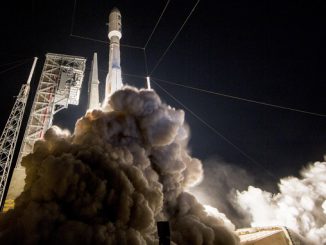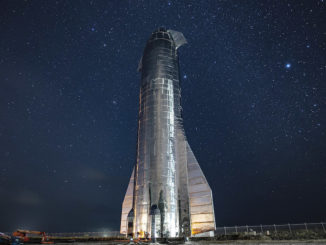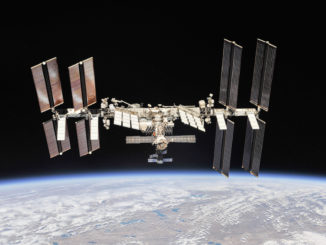A United Launch Alliance Atlas 5 rocket is set to carry Boeing’s Starliner crew capsule into space on an unpiloted test flight to the International Space Station. This timeline shows the major mission events planned from liftoff through Starliner’s orbital insertion burn about 31 minutes after launch.
The 172-foot-tall (52.4-meter) rocket, propelled by an RD-180 main engine and two solid rocket boosters, is set for liftoff Friday, Dec. 20, at 6:36:43 a.m. EST (1136:43 GMT) from Cape Canaveral’s Complex 41 launch pad.
The AEHF 5 mission will be the 81st flight of an Atlas 5 rocket, and the second Atlas 5 launch of 2019.
Built and owned by Boeing, the Starliner spacecraft is designed to carry up to five astronauts to the International Space Station in its initial configuration. NASA is paying Boeing approximately $5 billion to develop the Starliner vehicle through a series of agreements it has signed with the aerospace contractor since 2010.
The first Starliner launch will fly without astronauts on-board. The mission to the space station will verify the performance of the spacecraft’s systems before crews fly on future Starliner flights, beginning in 2020.
The Atlas 5 launch sequence will last nearly 15 minutes from liftoff through deployment of the Starliner spacecraft from the rocket’s dual-engine Centaur upper stage. Because the rocket will fly a flattened, shallow trajectory to lessen g-forces on astronauts crews, the Atlas 5 will release the Starliner spacecraft with a velocity just shy of that needed to reach a stable orbit around Earth.
The Starliner’s orbital maneuvering and attitude control engines will ignite for approximately 40 seconds around 31 minutes after liftoff to accelerate the capsule into a stable orbit and begin the journey to the space station.
The launch sequence begins with ignition of the Atlas 5’s first stage RD-180 engine at T-minus 2.7 seconds, followed seconds later by ignition of the two Atlas 5 strap-on solid rocket boosters to propel the launcher off the pad with nearly 1.6 million pounds of thrust.
Turning northeast to align itself with the space station’s orbital pathway, the Atlas 5 will surpass the speed of sound in 66 seconds. The twin solid rocket boosters, produced by Aerojet Rocketdyne, will burn for more than 90 seconds to give extra burst of energy during the Atlas 5’s initial climb away from Cape Canaveral. The booster casings will jettison at T+plus 2 minutes, 22 seconds, to fall into the Atlantic Ocean.
The RD-180 engine, responding to commands from the Atlas 5’s guidance computer, will throttle down to limit acceleration on the Starliner spacecraft to around 3.5Gs as the rocket becomes lighter from the consumption of liquid propellants.
The Atlas 5’s bronze first stage will shut down at T+plus 4 minutes, 29 seconds, and separate from the rocket’s Centaur upper stage six seconds later. An ascent cover over the Starliner spacecraft’s forward docking mechanism will jettison in two pieces at T+plus 4 minutes, 41 seconds, followed ignition of the Centaur’s two Aerojet Rocketdyne RL10A-4-2 engines at T+plus 4 minutes, 45 seconds.
The RL10 engines on the Centaur will consume super-cold liquid hydrogen and liquid oxygen, cumulatively generating nearly 45,000 pounds of thrust.
Early in the Centaur’s burn, at T+plus 5 minutes, 5 seconds, an aerodynamic skirt at the base of the Starliner spacecraft will release and fall away.
The Atlas 5’s new aeroskirt is no longer needed once the rocket climbs above the thick, lower layers of the atmosphere, and is jettisoned in two halves.
The Centaur upper stage’s RL10 engines will fire more than seven minutes until T+plus 11 minutes, 54 seconds.
Separation the Starliner capsule from the Centaur stage is planned at T+plus 14 minutes, 54 seconds. The Starliner will later perform an orbit insertion burn, and the Centaur will fall back to Earth for a fiery, destructive re-entry over the Indian Ocean nearly an hour after liftoff.
A graphic illustrating the times of major launch events is posted below.

Email the author.
Follow Stephen Clark on Twitter: @StephenClark1.



